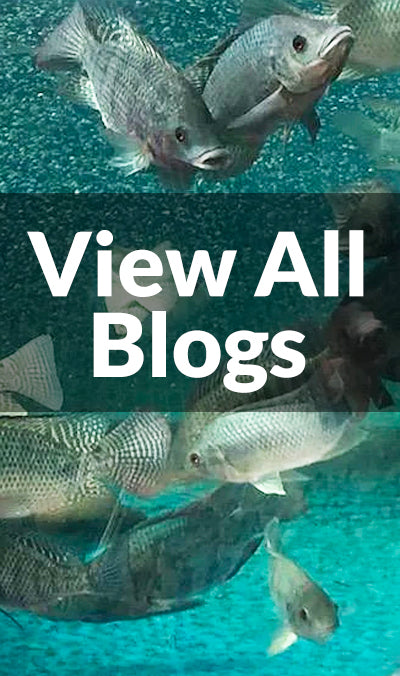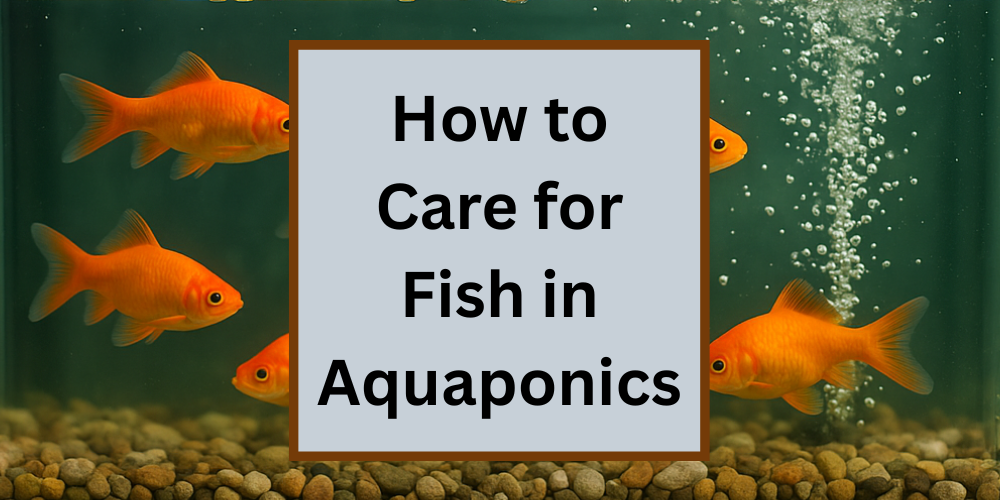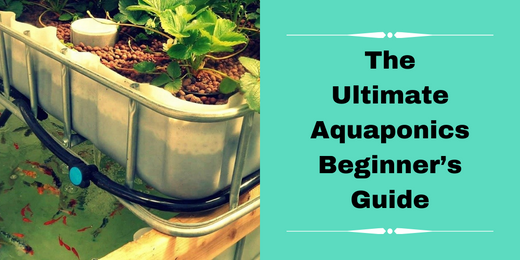Growing chives in aquaponics is one of the easiest wins for beginners: chives are hardy, fast-growing, and deliver big culinary payoff from a small space. Whether you’re starting a media bed on a balcony or adding herbs to a backyard system, chives thrive with minimal fuss, making them an ideal first herb to experiment with in your aquaponics setup.
In this blog, you’ll learn what chives need to grow and thrive in an aquaponics setup. We will also share the step-by-step planting methods (seeds vs seedlings), daily care routines, troubleshooting for common problems, and the best harvesting techniques to keep yields steady.
Why Chives Are Great for Aquaponics
When someone asks, “What are the best herbs for aquaponics?” chives are always near the top of the list. They are incredibly low-maintenance, adapt well to a variety of systems, and don’t require constant attention to thrive. This makes them one of the most beginner-friendly herbs for aquaponics.
Another advantage is their fast and continuous harvest cycle. Once established, chives can be cut back every few weeks, and the plant will regrow quickly. Unlike herbs that bolt or lose flavor over time, chives maintain their mild onion-like taste throughout the year, ensuring a steady supply for your kitchen.
Chives are also nitrogen-hungry plants, which means they pair perfectly with well-fed fish or systems where leafy greens are also grown. This helps balance your nutrient cycle while giving you lush green herbs.
Chives also serve a practical role in aquaponics gardens: their natural scent can deter common pests, reducing the risk of infestations that might affect more delicate plants. Whether you’re building a small aquaponics herb garden or scaling up to larger beds, chives are a resilient choice that provides flavor, function, and reliability.

Ideal Water and Environmental Conditions for Chives in Aquaponics
For strong growth and regular harvests, chives need stable water and environmental conditions. While they are resilient compared to fussier herbs, dialing in your system’s pH, water temperature, light, and nutrient levels will ensure consistent results.
1. Water Temperature:
Chives grow best in a moderate range of 65–75°F (18–24°C). Temperatures outside this range can slow growth. Since most common aquaponics fish (like tilapia and goldfish) thrive in similar conditions, chives are a natural fit for mixed systems.
2. pH Requirements:
Chives prefer a slightly acidic to neutral environment, ideally pH 6.0–7.0. If your pH drifts higher, you may see slower nutrient uptake, especially nitrogen.
3. Light Needs:
Chives require 12 to 14 hours of full-spectrum light per day. Outdoors, this means a sunny location; indoors, supplement with LED grow lights to maintain steady growth.
4. Nutrient Needs:
Chives are nitrogen-rich plants, which means they thrive in systems with healthy fish waste conversion. Pairing them with leafy greens like lettuce or spinach helps balance nutrient demands across your grow bed.
Maintaining these conditions doesn’t just keep your chives healthy, it also ensures the rest of your aquaponics system stays balanced.
The Best Aquaponics Systems for Growing Chives
When deciding which aquaponics system is best for growing chives, consider how the plant naturally develops. Chives prefer stable root support, consistent moisture, and steady nutrient access. While they can adapt to different designs, some systems suit them better than others.
1. Media Based Systems:
The media based system is the best choice for beginners. Chives thrive in grow beds filled with expanded clay or gravel because the roots have strong support and access to nutrients. The media also acts as a biofilter, helping maintain water quality.
2. Nutrient Film Technique (NFT):
Chives can grow in NFT channels, but they don’t always perform as well as lighter herbs like basil or mint. Their fibrous root systems may clog narrow channels over time, so NFT is better suited if you’re experimenting on a small scale.
3. Raft System or Deep Water Culture (DWC):
Chives tolerate rafts but may grow more slowly compared to media beds. They prefer the aeration and stability of a well-oxygenated tank, but without support media, roots are more vulnerable to rot if oxygen levels drop.
Recommendation:For consistent results, choose a media based aquaponics system. It balances plant support, water filtration, and ease of management, making it ideal for chives and other beginner-friendly herbs.
Planting Chives in Aquaponics: Seeds vs. Seedlings
One of the first choices you’ll face is whether to start chives from seeds or to transplant seedlings into your aquaponics system. Both methods work, but each has its pros and cons.
1. Starting from Seeds
Pros:
- Cost-effective and widely available.
- Strong root systems develop naturally in your grow media.
Cons:
- Slower to establish, germination takes 10–14 days, and plants may need 6–8 weeks before their first harvest.
- Requires patience and steady conditions (warmth and light).
2. Transplanting Seedlings
Pros:
- Faster harvests ( seedlings usually establish within 2–3 weeks).
- Less early-care hassle since they’ve already germinated.
Cons:
- Slight risk of transplant shock, especially if roots are disturbed.
- More expensive if purchasing multiple starter plants.
3. Grow Media Recommendations
Chives prefer expanded clay pebbles (hydroton) or clean aquarium gravel. These provide root support, oxygen, and water flow. Avoid fine media like sand that can compact and limit aeration.
4. Planting Depth & Spacing
- Place seeds about ¼ inch (0.5 cm) deep in the grow media.
- Space clumps or seedlings about 6–8 inches apart to allow airflow and prevent crowding.
- Keep media consistently moist during early growth to encourage sprouting.
- With proper planting, you can expect your first small harvest in about 8 weeks from seed or 4–5 weeks from seedlings, depending on system health and environmental conditions.
How to Care for Chives in Aquaponics
Once planted, chives don’t demand much, but consistent system care makes all the difference in growth rate and harvest quality. Here’s how to maintain them day to day and week to week.
1. Daily Care
- Check Water Quality: Ensure pH stays between 6.0–7.0 and temperature within 65–75°F (18–24°C). Small fluctuations are fine, but wide swings slow growth.
- Monitor Light: Chives need 12–14 hours of light daily. If you’re growing indoors, keep LED grow lights 6–12 inches above the plants.
- Quick Plant Check:Look for signs of stress such as drooping leaves, yellow tips, or algae buildup in the media.
2. Weekly Care
- Nutrient Balance: Chives are nitrogen-hungry plants. Test nitrate levels weekly to confirm fish waste is being converted efficiently. If growth seems slow, check whether your fish load or feeding rate needs adjusting.
- Pruning for Regrowth:Trim a few stalks weekly, even if you don’t need them for cooking. Regular pruning prevents overcrowding and encourages new shoots.
- Clean System Components: Rinse any algae from media or pipes. Algae competes with chives for nutrients and oxygen.
3. Troubleshooting Early Signs
- Yellowing Leaves: Often linked to pH imbalance or low nitrogen.
- Thin, Weak Growth: Usually caused by insufficient light or overcrowding.
- Root Issues: If roots look brown or mushy, increase aeration and reduce water stagnation.
With this simple routine, your chives will stay productive and healthy, supporting steady harvests while helping keep your aquaponics cycle balanced.
Troubleshooting Chive Problems in Aquaponics
Chives are generally hardy in aquaponics systems, but even the easiest herbs can face setbacks if conditions slip. Knowing how to spot and fix issues early helps keep your plants healthy and your system in balance.
1. Yellowing Leaves
Cause:Usually a sign of pH imbalance or nitrogen deficiency.
Fix: Test pH and adjust to 6.0–7.0. If nutrients are low, check fish feeding rates and biofilter efficiency.
2. Slow Growth
Cause:Insufficient light, low temperatures, or nutrient competition.
Fix: Ensure chives receive 12–14 hours of light daily, and keep water temperatures steady between 65–75°F (18–24°C). If growing alongside heavy feeders like tomatoes, increase fish stocking or supplement with additional leafy greens to balance demand.
3. Root Rot
Cause:Poor oxygenation in raft system or overly compacted grow media.
Fix:Improve aeration with air stones, clear out clogged media, and remove affected plants to prevent spread.
4. Pests
Chives naturally deter many pests with their scent, but aphids can occasionally appear.
Fix:Spray leaves with a diluted neem oil solution outside the system (avoid letting oil enter the water), or rinse plants under running water to dislodge pests.
5. Overcrowding
Cause:Chives grow in dense clumps and can choke themselves if left unchecked.
Fix:Divide and replant clumps every few months to keep airflow strong and prevent fungal growth.

How to Harvest Chives Without Damaging the Plant
Harvesting chives in aquaponics is simple, but the right technique keeps the plant productive for months, or even years. Unlike some herbs that weaken after cutting, chives respond to harvesting by producing new, tender shoots.
When to Harvest
Chives are ready when the leaves reach 6–8 inches tall, usually 4–6 weeks after planting seedlings or 8–10 weeks from seed. Once established, you can harvest every 3–4 weeks.
How to Harvest Correctly
- Use clean scissors or shears.
- Cut leaves 1–2 inches above the base of the plant. Avoid pulling or tearing, which can damage roots.
- Harvest no more than ⅓ of the plant at a time. This ensures strong regrowth and prevents stress.
Post-Harvest Tips
- Fresh Use: Chives are best used fresh in salads, soups, or as garnish.
- Storage: Wrap in a damp paper towel, place in a plastic bag, and refrigerate for up to a week.
- Freezing:Chop and freeze in ice cube trays with a little water or oil for long-term storage.
Companion Planting and System Planning
One of the strengths of aquaponics is that you can grow multiple plants in harmony. Chives make excellent companion plants, offering both culinary value and natural pest resistance.
Best Companion Plants for Chives in Aquaponics
- Leafy greens (lettuce, kale, spinach): These thrive in the same nutrient range and grow quickly.
- Other herbs (parsley, cilantro, mint, basil):Chives blend well in flavor gardens and have similar water and nutrient needs.
- Tomatoes and peppers:While more nutrient-hungry, they benefit from chives’ natural ability to repel aphids and spider mites.
Plants to Avoid Pairing with Chives
- Beans and peas: Chives may stunt their growth.
- Asparagus: Competes poorly with chives for nutrients.
System Planning Considerations
- Spacing: Plant chives at least 6 inches apart to allow airflow and reduce disease risk.
- Rotation: While not strictly necessary in aquaponics, rotating harvests across your grow bed prevents nutrient stress.
- Polyculture Design:Consider combining chives with fast-harvesting greens for a balanced, continuous yield cycle.
Conclusion
Chives are one of the easiest and most rewarding herbs to grow in aquaponics. They thrive in a wide range of conditions, add fresh flavor to your meals, and even help protect other plants by deterring pests. With the right setup, balanced nutrients, good lighting, and proper harvesting techniques, you can enjoy a steady supply of chives year-round while strengthening your aquaponics ecosystem.
If you’re new to aquaponics, chives are a great starting crop. They’re resilient, forgiving, and perfectly suited for small hobby systems or larger grow beds alike. More importantly, they give you hands-on experience managing water quality, nutrients, and plant care, skills you’ll use across your entire system.






Leave a comment (all fields required)